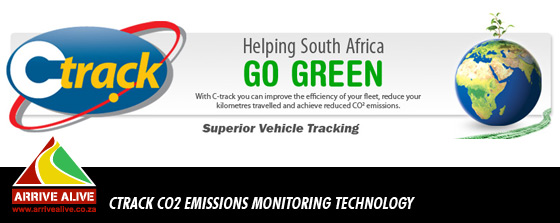Introduction to control of greenhouse gas/ CO2 emissions
Despite the failure of delegates from 192 nations to formulate a global emissions control policy to succeed the Kyoto Protocol, the Copenhagen summit held in December 2009 did highlight the need for urgent steps to be taken internationally to intensify control of ‘greenhouse gas’ (GHG) emissions, most notably, CO2 (carbon dioxide).
With The EU and Japan leading the fight to prevent rapid climate change, the world’s leading producers of greenhouse gas emissions, China and the USA, have been slow to embrace the notion of a universal emissions standard and post-Copenhagen, it is obvious that much needs to be done to plot a clear course in this regard. While electricity power stations, oil refineries and heavy industry remain the primary culprits in the release of CO2 into the earth’s atmosphere, global road transport contributes an estimated 14.6 percent of total GHG emissions via vehicle exhaust fumes.
“This is a significant percentage but one that can be easily reduced by simply driving more efficiently,” says Mark Rousseau, managing director of international vehicle telematics company, DigiCore Fleet Management & Ctrack South Africa.
“Vehicle manufacturers in the EU and Japan are busy developing both ‘green’ passenger and commercial vehicles designed to run on a host of ‘alternative’ fuels, from ethanol, to electricity and hydrogen. This is all good and well for those who can afford such luxuries, but the reality is, action needs to be taken now on a mass scale.” Driven by moral and business imperatives to help conserve our environment, DigiCore recently released a CO2 emissions reporting tool designed to work in conjunction with its vehicle fleet management system, Ctrack, states Rousseau.
South Africa and CO2 emissions
“Astoundingly, South Africa is the world’s 13th highest emitter of CO2 with a relatively high per-capita CO2 emissions rating of 8.59 metric-tons. Brazil, for example, is ranked 17th with a per-capita rating of only 1.86 metric-tons. If South Africa is to remain competitive in the global economy, it will have to begin implementing stringent emission-reduction strategies,” he says.
DigiCore’s Ctrack system has evolved over almost two decades to provide commercial fleet owners with enhanced productivity and business efficiencies, including lowered operational risk, improved fuel consumption and optimised vehicle routing.
“Ctrack’s new CO2 Emissions Report is a first for South African fleet owners and has already proved a great success in truck and bus fleets in Europe,” adds Rousseau. “Fleet operators looking to gain early-mover advantage on the ‘green’ front now have the perfect tool to not only proactively reduce their CO2 emissions but also to generate reports quantifying their carbon footprint. This will assist them in gaining valuable contracts while receiving tax breaks from SARS.”
Functionality of Ctrack CO2 Emissions Report / How does it work?
Explaining the Ctrack CO2 Emissions Report’s functionality, DigiCore’s technical director, Deon du Rand says: “A vehicle group is created for each category of vehicle, including the make and model. Fuel consumption and emissions values as stipulated by the vehicle manufacturers (OEMs) are then entered into the Ctrack database. We then enter a CO2 grams-per-litre value, a CO2 grams-per-kilometre (distance) value and a corresponding CO2 grams-per-hour. If we receive fuel consumption figures through the CANbus or through a fuel flow meter, the value according to grams-per-litre is displayed. If we do not receive a fuel consumption reading, we generate a grams-per-kilometre report. For equipment that logs hours rather than distance, we use the grams-per-hour value.”
The new Ctrack CO2 Report also boasts a ‘green’ dashboard, which graphically represents CO2 emissions as well as fleet CO2 emissions trends,” says du Rand. “With this vital information integrated with Ctrack’s existing management reporting on fuel consumption, speeding, over-revving, excessive idling and route deviations, fleet operators can quickly identify where CO2 is being unduly emitted and implement corrective measures.
Through ongoing driver training and optimised route scheduling using Ctrack, feet owners can ‘go green’ by saving fuel and thereby make a positive contribution to slowing climate change. It’s beyond debate – the future of good business is ‘going green’,” Rousseau concludes.
Also view:
